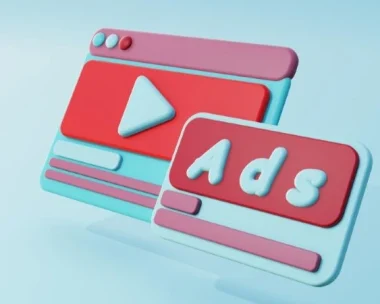Video Marketing Exploring Different Video Formats: Which One is Right for Your Brand?

In today’s digital landscape, video content has become a pivotal element of marketing strategies. With various video formats available, brands must navigate their options to select the format that aligns best with their goals, audience, and overall brand identity. This blog post explores different video formats, their unique characteristics, and how to choose the right one for your brand.
Types of Video Formats
Explainer Videos
Explainer videos are short, engaging videos designed to explain a concept, product, or service clearly and succinctly.
- Characteristics: Typically, explainer videos are 1-3 minutes long and often use animations or simple graphics to illustrate key points. They focus on making complex ideas easy to understand.
- Benefits: Effective for introducing new products or services, these videos help capture the audience’s attention and simplify information. They can also drive conversions by providing clear calls to action.
Product Demos
Product demo videos showcase the features and benefits of a product or service in action.
- Characteristics: Usually 2-5 minutes long, product demos often include live-action footage or screen recordings. They highlight the practical uses and advantages of a product.
- Benefits: Product demos are ideal for educating potential customers. They help demonstrate how a product solves specific problems and can also address common questions and objections.
Testimonials and Case Studies
Testimonials and case study videos feature real customers or clients sharing their experiences with your brand.
- Characteristics: These videos can range from 1-4 minutes and often include interviews or personal stories. They focus on showcasing positive outcomes and experiences.
- Benefits: Building credibility and trust, testimonials and case studies provide social proof and validate the effectiveness of your products or services.
Brand Stories
Brand story videos tell the narrative of your brand, including its mission, values, and history.
- Characteristics: Typically, 2-6-minute-long brand story videos often feature a combination of interviews, visuals, and voiceovers. They aim to connect emotionally with the audience.
- Benefits: Brand stories strengthen brand identity and foster emotional connections, helping convey your brand’s ethos and differentiate it from competitors.
How-To and Tutorial Videos
How-to and tutorial videos offer step-by-step guidance on performing specific tasks or using products.
- Characteristics: Generally, 3-10 minutes long, these videos include detailed instructions, demonstrations, and tips. They may use screen recordings, live-action footage, or animations.
- Benefits: Providing valuable educational content, such as how-to and tutorial videos, helps establish your brand as an authority and drives engagement through practical advice.
Live Streaming
Live streaming involves broadcasting video content in real time to an online audience.
- Characteristics: Live streams can vary in length and often include real-time interactions through chat or comments. They can cover events, Q&A sessions, or behind-the-scenes glimpses.
- Benefits: By engaging with audiences in real-time, live streaming fosters a sense of immediacy and authenticity. It helps build community and generate real-time feedback.
Animated Videos
Animated videos use animation techniques to convey messages, tell stories, or explain concepts.
- Characteristics: Animated videos can be 1-5 minutes long and include 2D or 3D animations. They are highly versatile and can be tailored to suit various styles and themes.
- Benefits: Creative and visually appealing, animated videos are effective for capturing attention and simplifying complex ideas. They offer flexibility in terms of design and storytelling.
Choosing the Right Video Format for Your Brand
Define Your Goals
Identify the primary objectives of your video content.
- Brand Awareness: If your goal is to build brand recognition, consider brand story videos or animated videos that highlight your brand’s unique identity.
- Customer Education: For educating your audience, product demos or how-to videos can effectively convey information and demonstrate value.
- Engagement and Trust: To foster engagement and trust, testimonials, case studies, and live streaming can provide authentic, relatable content.
Know Your Audience
Understand the preferences and behaviors of your target audience.
- Content Preferences: Determine what type of video content resonates with your audience. For example, younger audiences might prefer dynamic animated videos, while professionals might value informative product demos.
- Viewing Habits: Consider how your audience consumes content. If they prefer quick, easily digestible content, short explainer videos or how-to videos might be ideal.
Align with Your Brand Identity
Ensure the chosen video format aligns with your brand’s personality and messaging.
- Brand Voice: Choose a format that complements your brand’s tone and style. For a playful brand, animated videos or an engaging brand story might be suitable. For a professional brand, product demos or testimonials could be more effective.
- Visual Style: Match the video format with your brand’s visual identity. Consistent branding elements, such as colors and logos, help reinforce brand recognition.
Assess Resources and Budget
Evaluate your resources and budget to determine the feasibility of different video formats.
- Production Costs: Some video formats, such as high-quality product demos or animations, may require a larger budget. Assess your resources and choose a format that fits within your budget.
- Time and Expertise: Consider the time and expertise needed for production. For instance, live streaming requires real-time interaction and preparation, while animated videos might involve complex design work.
Best Practices for Creating Effective Videos
Focus on Quality
Regardless of the format, prioritize high production quality.
- Clear Messaging: Ensure your video communicates a clear and concise message. Avoid clutter and focus on delivering valuable content.
- Professional Production: Invest in good equipment or professional services to ensure your videos look and sound polished.
Optimize for Platforms
Tailor your videos for the platforms where they will be published.
- Aspect Ratios and Formats: Different platforms may have specific requirements for video aspect ratios and formats. Optimize your videos to meet these specifications.
- Engagement Features: Utilize platform features such as captions, annotations, or interactive elements to enhance viewer engagement.
Include a Strong Call to Action
Incorporate a clear call to action (CTA) to guide viewers on what to do next.
- Actionable Steps: Encourage viewers to take specific actions, such as visiting your website, subscribing to your channel, or making a purchase.
- Visibility: Make sure the CTA is prominent and easily noticeable in your video.
Conclusion
Selecting the right video format for your brand involves understanding the unique characteristics of each format, defining your goals, knowing your audience, and aligning with your brand identity. By choosing the format that best fits your objectives and resources, you can create compelling video content that resonates with your audience, enhances engagement, and drives business success. Embrace the power of video marketing and leverage the right formats to tell your brand’s story, educate your audience, and build lasting connections.


